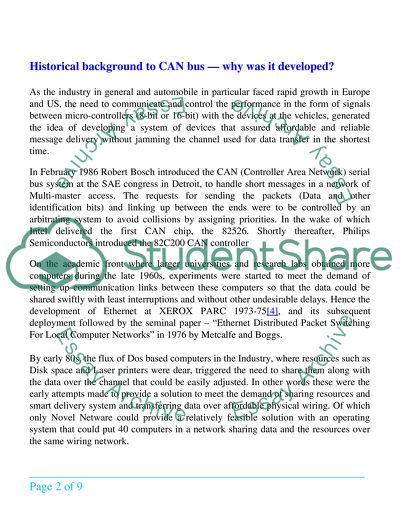Cite this document
(Report on CAN Bus Technologies Case Study Example | Topics and Well Written Essays - 1750 words, n.d.)
Report on CAN Bus Technologies Case Study Example | Topics and Well Written Essays - 1750 words. https://studentshare.org/technology/1503757-report-on-can-bus-technologies
Report on CAN Bus Technologies Case Study Example | Topics and Well Written Essays - 1750 words. https://studentshare.org/technology/1503757-report-on-can-bus-technologies
(Report on CAN Bus Technologies Case Study Example | Topics and Well Written Essays - 1750 Words)
Report on CAN Bus Technologies Case Study Example | Topics and Well Written Essays - 1750 Words. https://studentshare.org/technology/1503757-report-on-can-bus-technologies.
Report on CAN Bus Technologies Case Study Example | Topics and Well Written Essays - 1750 Words. https://studentshare.org/technology/1503757-report-on-can-bus-technologies.
“Report on CAN Bus Technologies Case Study Example | Topics and Well Written Essays - 1750 Words”. https://studentshare.org/technology/1503757-report-on-can-bus-technologies.


